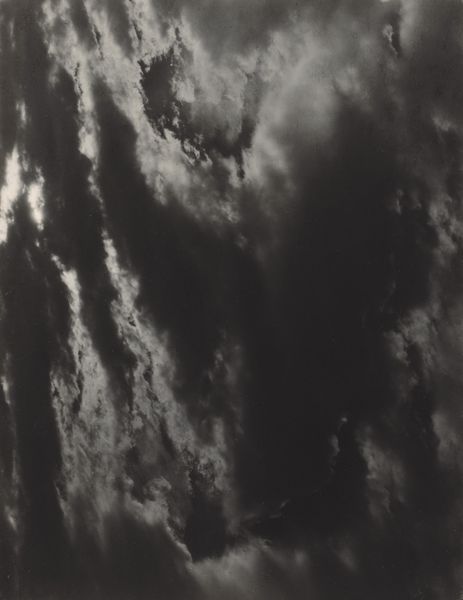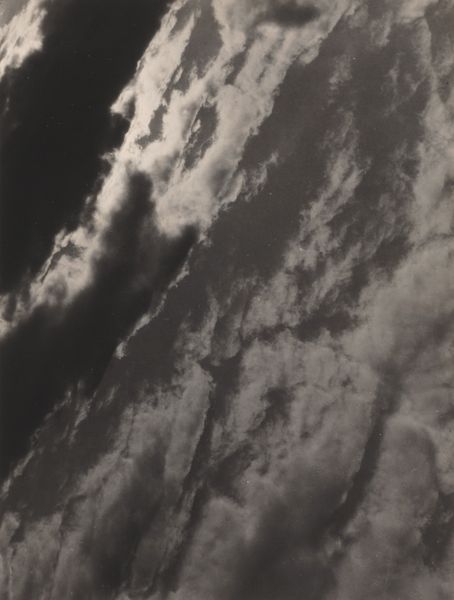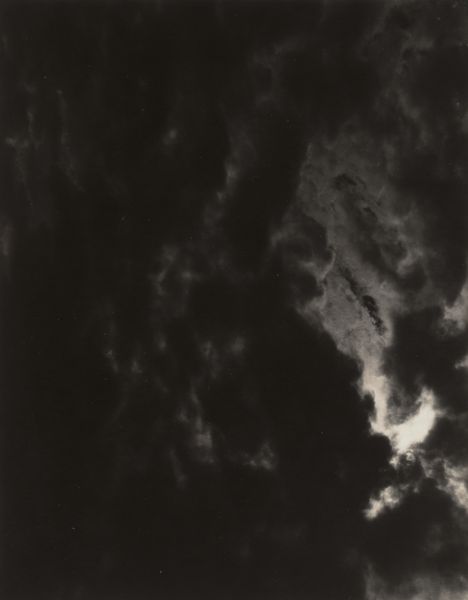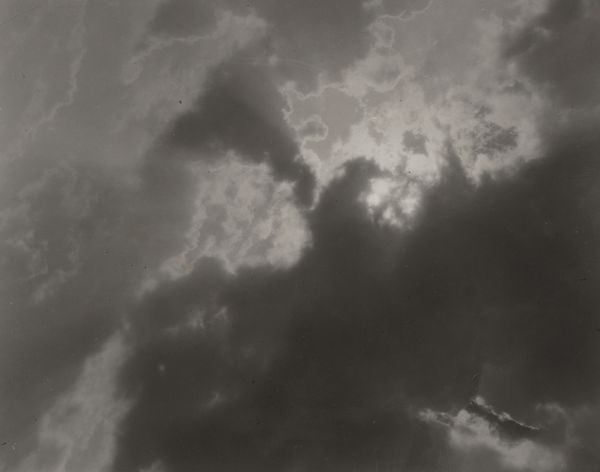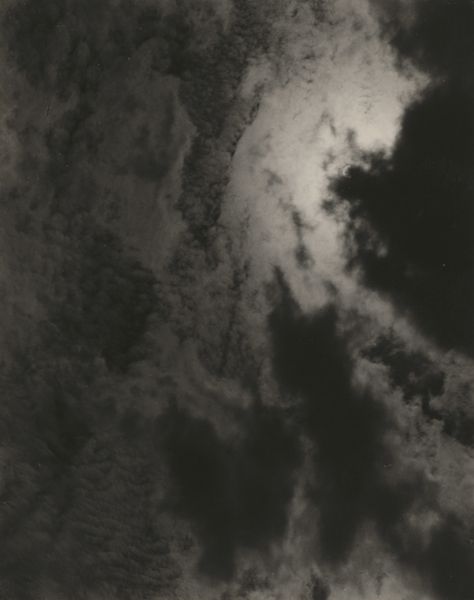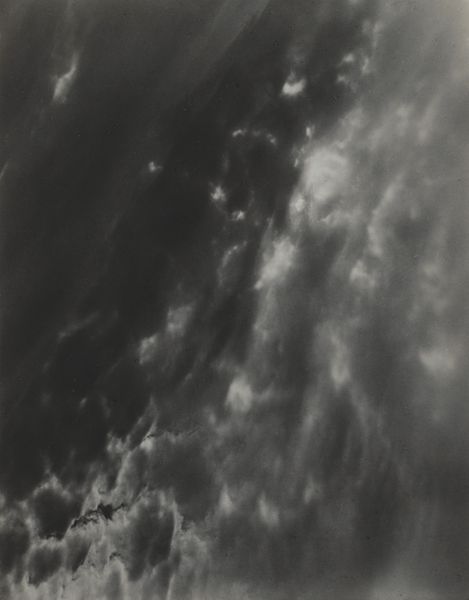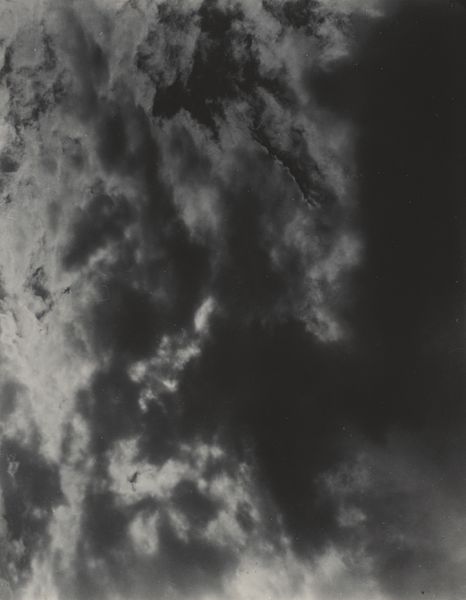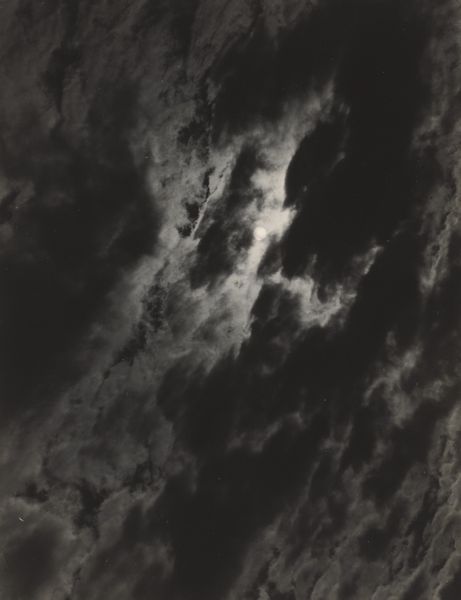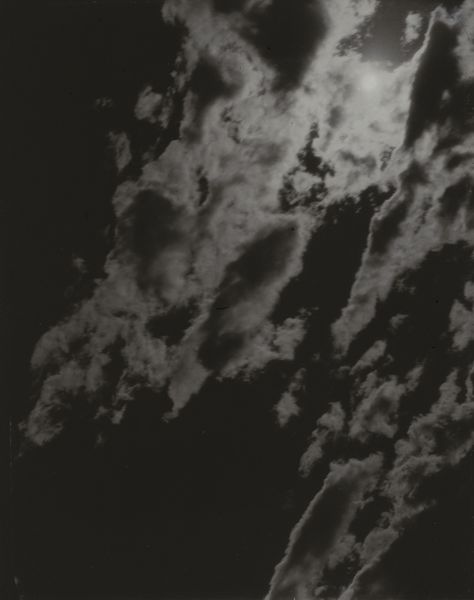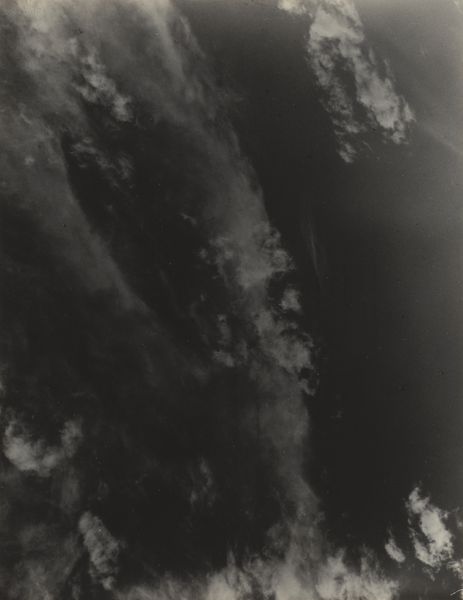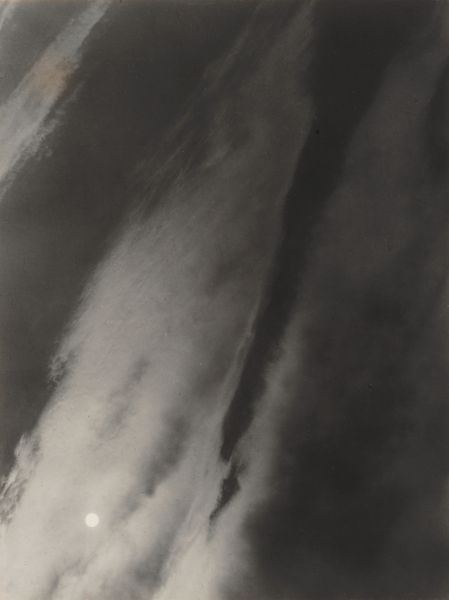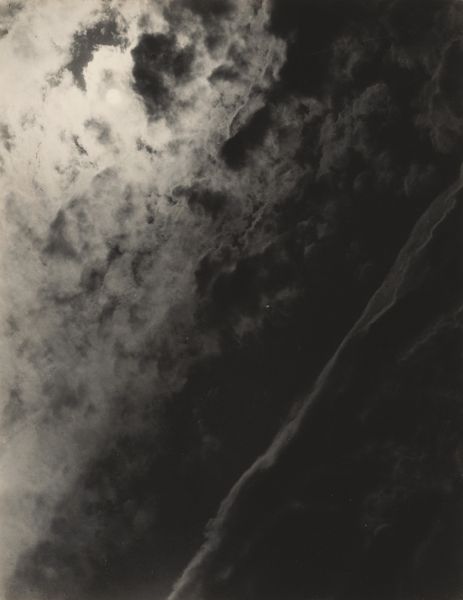
photography, gelatin-silver-print
#
still-life-photography
#
black and white photography
#
pictorialism
#
landscape
#
photography
#
gelatin-silver-print
#
monochrome photography
#
abstraction
#
monochrome
#
modernism
#
monochrome
Dimensions: sheet (trimmed to image): 12 x 9.3 cm (4 3/4 x 3 11/16 in.)
Copyright: National Gallery of Art: CC0 1.0
Curator: This photograph, “Equivalent,” a gelatin-silver print made by Alfred Stieglitz in 1925, part of his extended series on cloud formations… Well, what's your take on it? Editor: It feels vast, and a little melancholic, honestly. It's like gazing into a dream sky, everything feels weighty yet weightless, all at once. Curator: Stieglitz believed these cloud studies held equivalent emotional value to portraits, even acting as self-portraits, capable of conveying his deepest feelings without literal representation. Editor: Hmm. Equivalent, huh? So, these aren't just clouds, but symbols, stand-ins. Makes you wonder what he was feeling when he clicked the shutter, or perhaps what we're feeling as we view the shot now, is the key. Curator: Absolutely. Pictorialism, the movement to which Stieglitz belonged, strived for artistic recognition of photography, aligning it with painting through manipulated effects. Here, he uses light and shadow to almost sculpt the sky. Editor: I’m really drawn to the idea of a photograph being able to capture such intense emotion through something as simple, yet grand, as clouds. Almost like a visual poem. It resonates with that need to capture the fleeting, that ephemeral state. Curator: It’s fascinating, the way we assign symbolic meaning to something so commonplace as cloud formations. They become screens upon which we project hopes, fears, even anxieties about time and change. Editor: Yes, and the absence of color almost makes them feel eternal, unbound by temporal concerns, less like fleeting moments. It encourages deeper reflection, no distractions from those grayscale emotions. Curator: Stieglitz believed these "Equivalents" were his most significant work, hoping they'd be understood purely for their emotional content, beyond any literal depiction. A lofty goal, don't you think? Editor: Maybe. But art’s all about making leaps of faith, isn’t it? Leaving interpretations open, offering a space for feelings more than facts, trusting that someone, somewhere, will get the wavelength. Thanks for that view into his sky. Curator: My pleasure. A glimpse, perhaps, into Stieglitz’s soul.
Comments
No comments
Be the first to comment and join the conversation on the ultimate creative platform.
